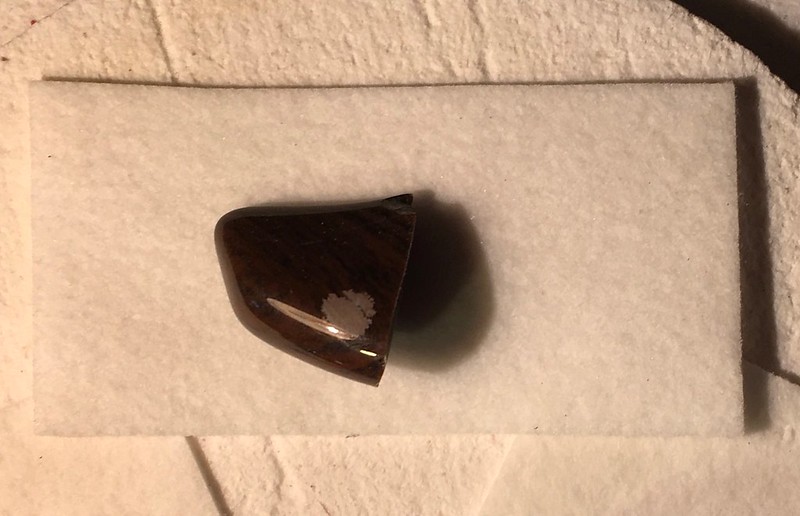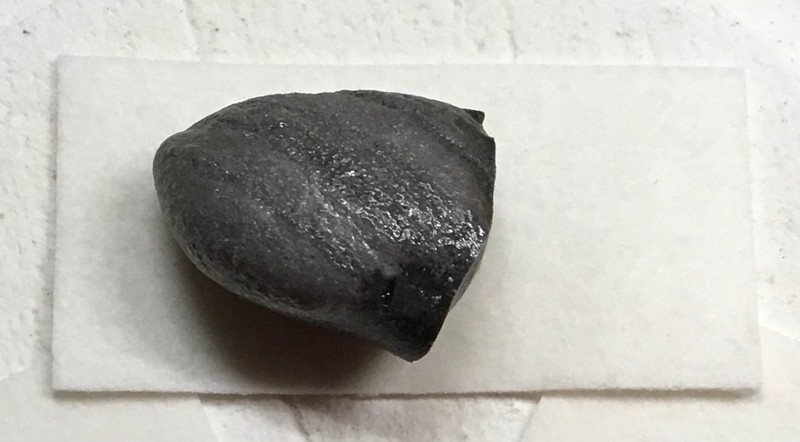kevin24018
spending too much on rocks
 
Member since February 2012
Posts: 284
|
Post by kevin24018 on Aug 15, 2018 16:57:48 GMT -5
some interesting stuff imo
|
|
|
|
Post by aDave on Aug 15, 2018 18:26:50 GMT -5
That was interesting. I wonder if there are any takeaways for jamesp. |
|
goatgrinder
spending too much on rocks
  Make mine a man cave
Make mine a man cave
Member since January 2017
Posts: 368 
|
Post by goatgrinder on Aug 15, 2018 19:08:29 GMT -5
Nerdgasm. I wonder if the sword maker had considered an industrial microwave smelter? They get much hotter much faster. And they can be built in the basement by someone like jamesp. |
|
Deleted
Deleted Member
Member since January 1970
Posts: 0
|
Post by Deleted on Aug 15, 2018 21:01:17 GMT -5
Interesting illustration as to why there is no man-made obsidian. Once a person starts adding flux and other ingredients to control the melt and decrease the cooling time, it is no longer obsidian, just man-made glass that obtained some silica from powdered obsidian, rather than quartz sand. Looking for those ingredients used to manufacture man-made glass is one way to test for fakes fraudulently being sold as "natural" obsidian (as well as artificial tectites such as fake modavite), BTW.
|
|
|
|
Post by rockjunquie on Aug 16, 2018 6:43:18 GMT -5
Dude's tenacious. He has more patience than I do.
|
|
jamesp
Cave Dweller 
Member since October 2012
Posts: 36,602
|
Post by jamesp on Aug 16, 2018 7:26:51 GMT -5
Before and after 1500F, pumice perhaps ?   |
|
kevin24018
spending too much on rocks
 
Member since February 2012
Posts: 284
|
Post by kevin24018 on Aug 16, 2018 8:45:41 GMT -5
That was interesting. I wonder if there are any takeaways for jamesp. that was my main thought behind posting the video lol |
|
|
|
Post by HankRocks on Aug 16, 2018 9:00:04 GMT -5
I suspect that the in addition to temperature, pressure is also a key component to creating the correct lava mixture that allows for right mixture for Obsidian to form. Then a sudden release of pressure with a rapid cooling(contact with water maybe) that does not allow any crystal structure to form, producing the glass like structure. If our resident Mad Scientist starts messing with pressurized vessels someone better warn his neighbors.  |
|
Deleted
Deleted Member
Member since January 1970
Posts: 0
|
Post by Deleted on Aug 16, 2018 12:38:09 GMT -5
Before and after 1500F, pumice perhaps ? Interesting. Or something akin to perlite? Both pumice and perlite come from the same rhyolitic sources as does obsidian. I've seen some similar-looking stuff around obsidian and rhyolite flows. ...with a rapid cooling (contact with water maybe) that does not allow any crystal structure to form, producing the glass like structure. Higher temperature undoubtedly is a factor. Pressure, while a factor in formation, appears not to be critical (pressure drops to near atmospheric levels, once the obsidian flows out onto the surface). In one of his first attempts on the video, it was noted how extremely viscous was the melted obsidian. Although we call them obsidian "flows," they don't flow so much - it is more like it is extruded, than flows, from the vent, as has been observed in a few recent eruptions. Less viscous than rhyolite eruptions, obsidian is far more viscous than man-made glass (or even the basaltic lava pictured flowing to the sea from Kilauea). That was one of the reasons he resorted in the video to the additives used to make window glass (which can actually flow enough to be cast). In nature, moreover, obsidian cools/anneals over many months (another reason additives are used in man-made glass that allow speedier annealing). I know some old textbooks have obsidian forming by a flow being quenched by hitting water and such, but it simply explodes into small pumice-like grains if that happens. Obsidian is found on slopes, rather than at what were lake or ocean shores. The outer rind on the obsidian flow (where it cools faster) isn't as glassy at all and shows a network of deflation fissures. Much of the rind eventually weathers off as pumiceous perlite. Although the flows start out monolithic (or nearly so), the brittle glass does eventually break down into smaller chunks from movement of the earth, temperature changes, being dislocated by subsequent eruptions, weathering, tumbling downslope, etc.). This produces smaller boulders and chunks that can have surfaces that weather yet further, and which are mostly what collectors pick up and dig (although some huge sections can occasionally still lurk underground). |
|
jamesp
Cave Dweller 
Member since October 2012
Posts: 36,602
|
Post by jamesp on Aug 17, 2018 5:34:36 GMT -5
Cool beans @rocks2dust.
Figured conditions have to be quite favorable for obsidian to form and survive. Annealing/correct temps/chemical blend etc.
Glass is so vulnerable to temperature impacts.
Many of the guys that chip out ridiculously long obsidian spearheads use large obsidian needles.
Certain you are familiar w/them.
|
|
jamesp
Cave Dweller 
Member since October 2012
Posts: 36,602
|
Post by jamesp on Aug 17, 2018 5:38:19 GMT -5
Some of the obsidian melted like glass and did not do the perlite/pumice thing.
There are probably 1000's of different formulas and purity levels of obsidian.
Even in one flow it is likely variable.
|
|
















